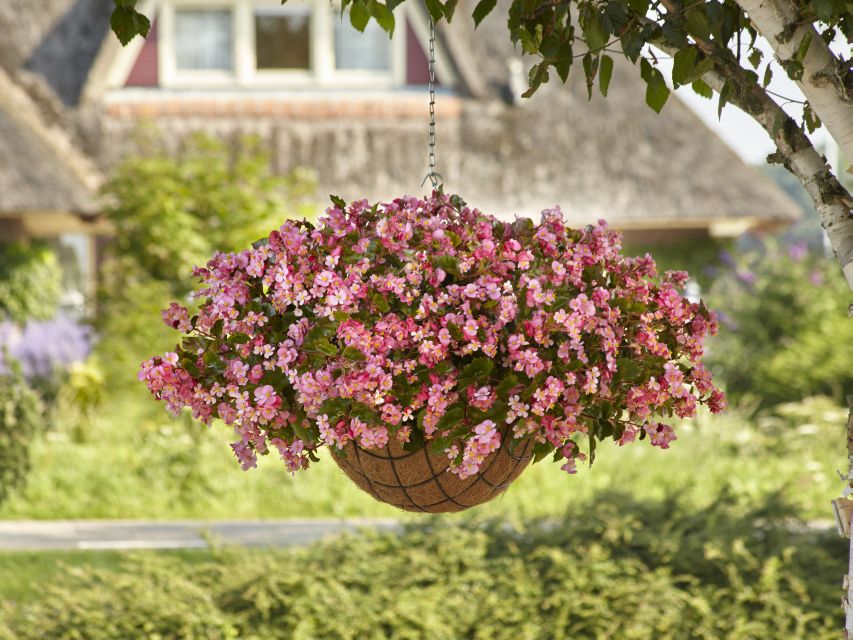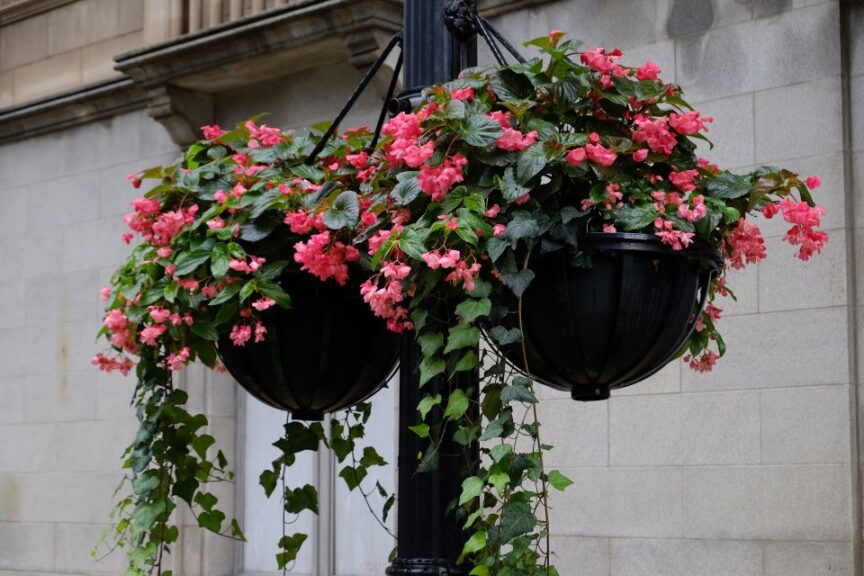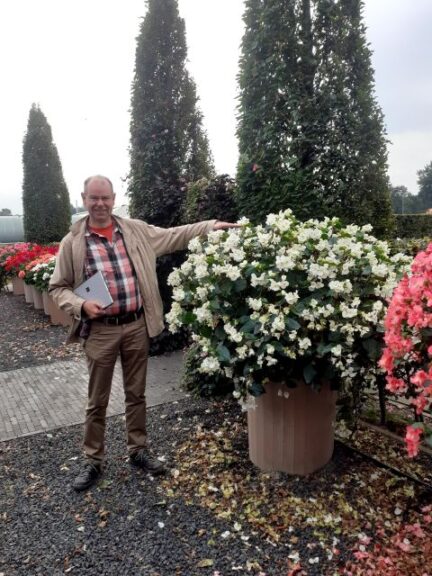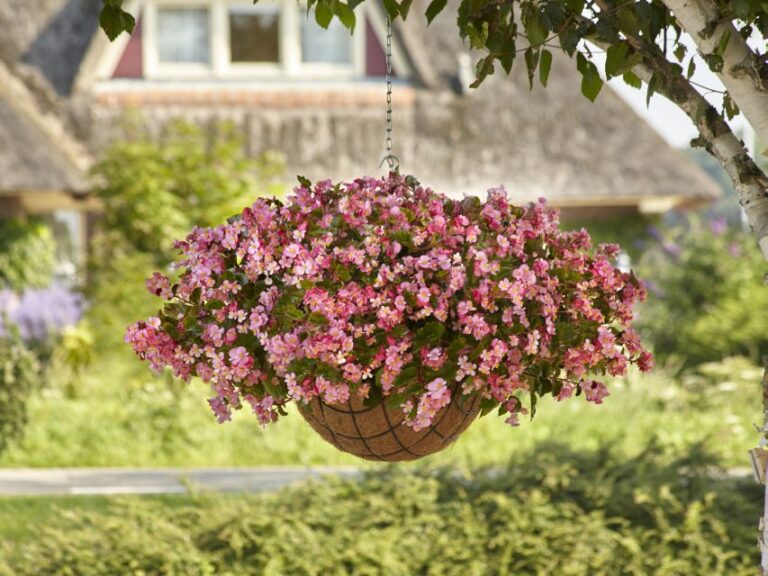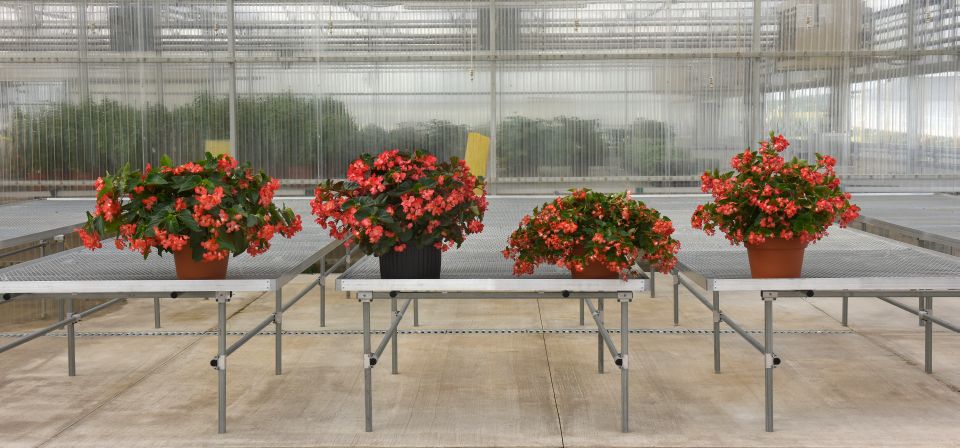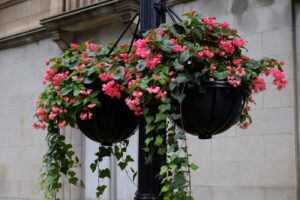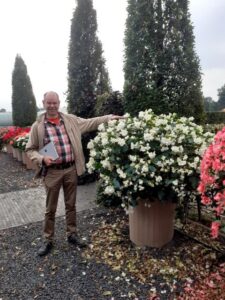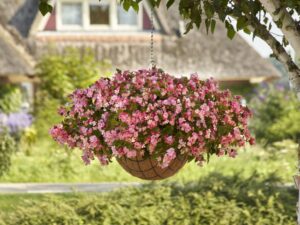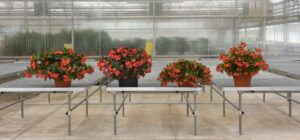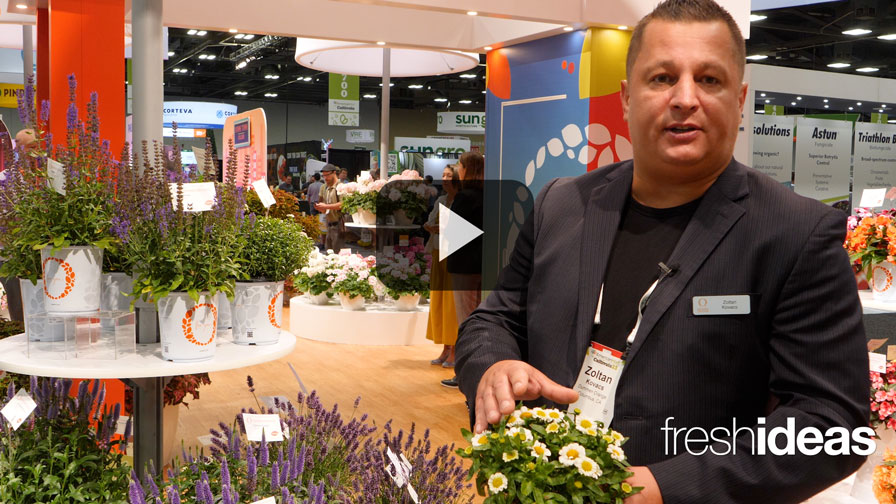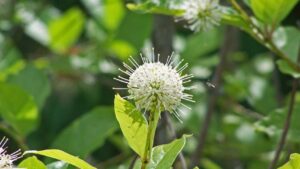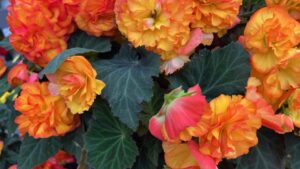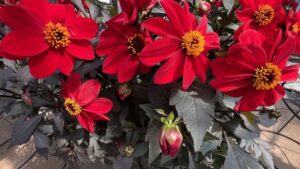The Specifics of Interspecific Begonias
It all started with Begonia ‘Dragon Wing’ almost 25 years ago. While this variety has been on the shelf for decades, it was truly unique when it was first introduced in 1999. The success of Dragon Wing was driven by the garden consumer. They and the landscape professional recognized the added value of this Interspecific Begonia because of its performance and its versatility, not to mention its unique arching habit.
After all these years, Dragon Wing is still a product that PanAmerican Seed is known for, and developments continue in this series today with the long awaited White Dragon Wing, which has been introduced for 2023 (and more to come next year).
There’s no doubt the introduction of Dragon Wing as an Interspecific Begonia has been a game changer for the Begonia class. Dragon Wing and its possibilities has been inspiring to breeders over time, including our own breeders, who saw growers asking for products that are more compact or earlier to flower. Thus BabyWing was born, with a much broader color range than Dragon Wing and also with a bronze foliage variety. Add to that heat loving, with production for early-season sales – it’s still the earliest Interspecific Begonia on the market.
When bringing new products to market, breeders look for innovation opportunities. Products that are genetically different while also creating added value for the grower and consumer offer the most potential for sales.
The success of these early Interspecific Begonias have been built upon over the years. I believe the key in this is in the forgiving nature of this class. Their durability means gardeners spend less time caring for and maintaining their plants. This appeals to a wide range of gardeners, from people who spend hours per week in their garden to those who only have a few days to spare during an entire summer. Interspecific Begonia plants will look great regardless, as they require very low maintenance while flowering from beginning to the end of the season.
Interspecific Begonias don’t care where they are planted. They like both shade and sun areas, and do well in containers or landscapes. They will show more flowers/color under sunnier conditions, and partial sun is the most ideal.
With an emphasis towards a more sustainable future of gardening, begonias are a great solution for dry periods during the summer, as they are quite drought tolerant and also heat loving. Without any deadheading, they easily flower until frost.
Next-generation Interspecific Begonias are more vigorous, with a larger upright habit. With this vigor came the most competitive market growth over the years. PanAmerican Seed has been working with two very experienced breeders in this class, to strengthen our program. A white flowering variety became a big deal for the Megawatt series for 2023 and brought with it a high level of innovation.
I’m glad we’ve made these color improvements a breeding focus, to remain appealing and on-trend with consumers. I can remember the day in 2019. We just finalized our seasonal trials. The begonia breeder came to me and said: “I haven’t tried it yet, but it just all came together in my mind; I know what cross will create the Megawatt White we need.” With support, we were able to fast track the processes needed for this variety and today we reap the reward. Our highly experienced breeders are invaluable.
Let’s look at their use in landscapes all over the world – from professional landscape growers in the U.S. to municipal plantings in China. While almost all Interspecific Begonia series work for landscaping, most of them grow in an upright habit and not sideways. PanAmerican Seed breeder Lynne Knosher found a species that made a begonia more spreading right from the beginning of plant development. Branches grow directly to the side instead of upwards. A nice addition: It is also day-length neutral.
Needless to say, the product development team fell for the concept: An Interspecific Begonia with a spreading habit that’s early to flower is exactly what is needed for professional landscaping.
In terms of production scheduling, Hula and BabyWing are both day-length neutral products. Dragon Wing and Megawatt are facultative short-day plants, which means they are faster to flower under short days. Dragon Wing is more daylength sensitive than Megawatt.
What has also been a part of the success of Interspecific Begonias is that growers have a lot of opportunities to sell this product, starting with early-season BabyWing and spreading Hula in packs or hanging baskets. About two weeks later, Megawatt production is ready, followed by Dragon Wing for main season sales. This extends the Interspecific Begonia season until frost.
Back to versatility, Interspecific Begonias can be offered to the market in packs to 6-inch pots or in larger pots with multiple inputs. To make a full basket or tub with multiple plants in it, plant them with wings out to create a nice, round product.
What’s Next?
Breeding will continue in Interspecific Begonias because this product never disappoints. It is an easy, colorful product for gardeners and a top performer for the professional landscaper. There are series on the market to meet small to larger pot sizes, in different colors, and a shape for every different kind of use. Their low maintenance and low water needs are even more important as we look towards the future and more breeding programs embrace sustainability, and yes, developing bulletproof products for the new consumer.
For culture information and research results on Interspecific Begonias, visit www.panamseed.com.





